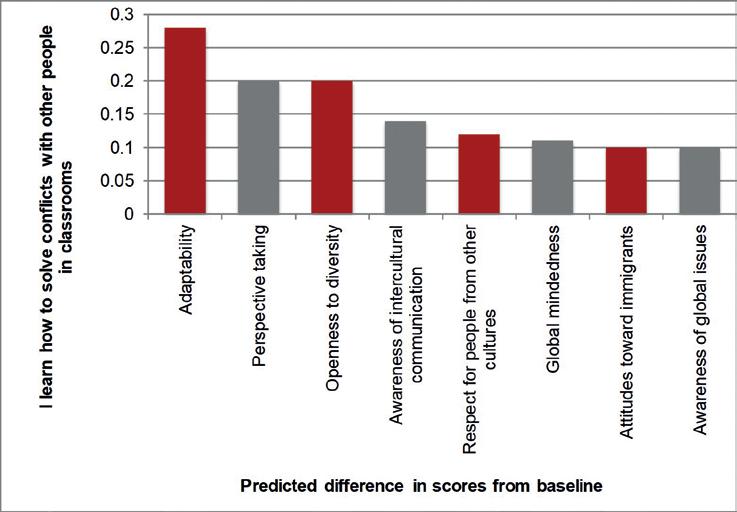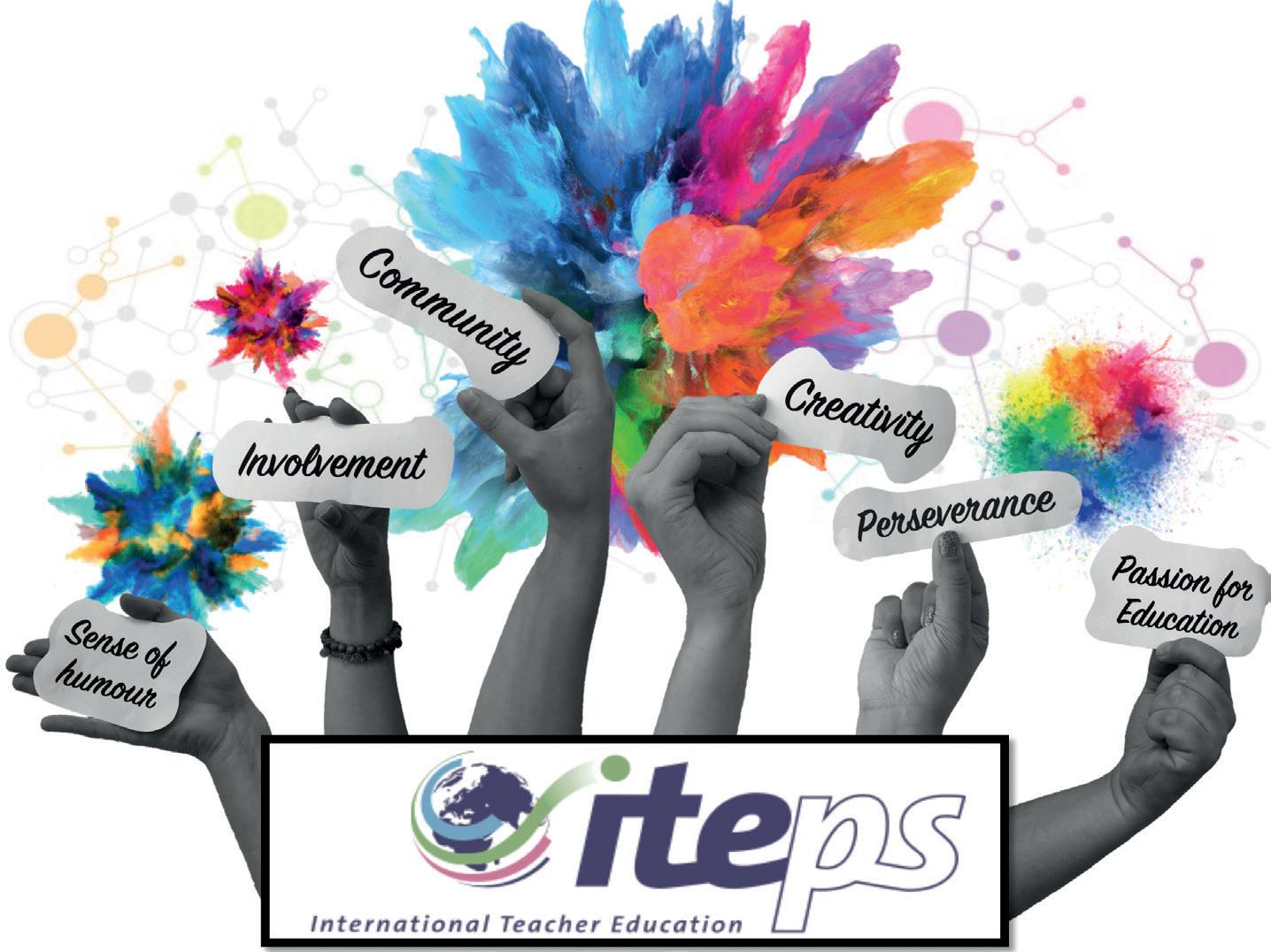
6 minute read
How can schools teach global competence? Christina Hinton
How can schools teach global competence?
Christina Hinton shares five practices that promote students’ global competence
How can our youth deal with contemporary global challenges, such as climate change, social divisions in diverse societies, and an internationally interdependent economy? To tackle these challenges, students need global competence, which PISA defines as the ability to examine global issues, understand and appreciate different perspectives, interact respectfully with others, and take action toward sustainability and collective well-being.
The team I lead at Research Schools International (RSI) carried out a research study to investigate how schools can support students to develop global competence. We partnered with Round Square to collect data from teachers and students in their international network of schools, collecting data in 147 schools across 34 countries (Figure 1). We analyzed these data using quantitative and qualitative methods to identify learning activities that promote global competence. The study examined measurable PISA global competencies that comprise global competence. It included the following five PISA global competencies: adaptability, global-mindedness, openness to diversity, perspective taking, and respect for other cultures, which are defined in OECD/ PISA (2018). In addition, it included the following 6 additional PISA global competencies: attitudes toward immigrants, awareness of global issues, awareness of intercultural communication, engagement (with others) regarding global issues, interest in learning about other cultures, and selfefficacy regarding global issues, which are based on a scales PISA provided for use in this study.
Our analysis revealed five key learning activities that support global competence. These learning activities were statistically significantly related to multiple PISA global competencies. In addition, the majority of teachers and students rated them as ‘effective’ or ‘very effective’ at promoting global competence (Table 1). Further, participants shared accounts of how these activities nurtured global competence in schools around the world and provided insights into how to implement them effectively.
Learning activities
Volunteering Participating in events celebrating cultural diversity Learning how to solve conflicts Learning about different cultural perspectives Participating in classroom discussions about world events
Table 1. Teacher and student ratings of learning activities
Teacher rating
Percent of teachers who rated each activity as ‘effective’ or ‘very effective’ at promoting global competence 90% 83% 82% 86% 90%
Student rating
Percent of students who rated each activity as ‘effective’ or ‘very effective’ at promoting global competence 76% 68% 71% 81% 76%
Volunteering services to help people in the wider community was statistically significantly related to eight global competencies (Figure 2). The baseline in this graph is the predicted score for each global competency for students who participated in this activity ‘almost never’, ‘rarely,’ or ‘sometimes.’ The bars show the predicted difference in each global competency score from the baseline for students who participated in the activity ‘often’ or ‘very often.’ Figure 2. Relationship between volunteering and PISA global competencies
Participants shared rich examples of how volunteering promoted global competence. Students often reported that it engendered a sense of responsibility to support people living in poverty, which is central to global-mindedness. Other participants discussed how it nurtured a respect

for other cultures. Volunteering was most impactful when it involved a long-term partnership that gave students the opportunity to form empathetic connections with the people in the communities they were serving.
Participating in events celebrating cultural diversity throughout the year was statistically significantly related to eight global competencies (Figure 3). This graph shows the predicted difference from the baseline in each global competency score for students who participated in this
activity ‘often’ or ‘very often.’

Figure 3. Relationship between events on cultural diversity and PISA global competencies
Participants shared a wide range of examples of events promoting cultural diversity, such as conferences, discussion forums, global debates, athletic/academic competitions, foreign language events, observances of religious and cultural holidays, and community-oriented events showcasing a variety of different cultures. Many students reported that these glimpses into other cultures piqued their interest in other cultures and promoted respect for people from other cultures. Teachers and students both emphasized the importance of contextualizing events celebrating cultural diversity in a larger educational strategy with extension activities.
Learning how to solve conflicts with others in the classroom was statistically significantly related to eight global competencies (Figure 4). This graph shows the predicted difference from the baseline in each global competency score for students who participated in this activity ‘often’ or ‘very often.’

Figure 4. Relationship between learning to solve conflicts and PISA global competencies
Participants spoke of how learning to solve conflicts in the world developed an awareness of global issues as they learned about conflicts around the world and the issues associated with them. Further, many students reported that they collaborated with classmates from different backgrounds on projects about solving conflicts in the world and therefore developed an awareness of intercultural communication as well.
Learning about different cultural perspectives was statistically significantly related to six global competencies (Figure 5). This graph shows the predicted difference from the baseline in each global competency score for students who participated in this activity ‘often’ or ‘very often.’ Figure 5. Relationship between learning about different cultural perspectives and PISA global competencies
As there are many ways that students can gain exposure to different cultural perspectives, participants shared varied examples of this learning activity, ranging from international exchanges among students, to school clubs celebrating diversity, to exchanges of ideas, to living in a boarding school with students of different backgrounds. Participants discussed many ways that learning about different cultural perspectives nurtured global competence. Most often, participants reported that this activity cultivated an openness to diversity.
Participating in classroom discussions about world events was statistically significantly related to five global competencies (Figure 6). This graph shows the predicted difference from the baseline in each global competency score for students who

participated in this activity ‘often’ or ‘very often.’

Figure 6. Relationship between discussions about world events and PISA global competencies
Many students described how these discussions developed their understanding of global issues and boosted their selfefficacy regarding global issues. Students often spoke about these discussions as powerful learning experiences. Our survey asked students which activities they would like schools to offer more to support them to develop global competence. Across countries, students requested more opportunities to discuss current events from a global perspective.
Next steps
The five key learning activities identified in this study can be effectively adapted for use in a diversity of schools across many countries. RSI will therefore launch a program of work in which our research team works with an international network of schools to support them to deepen their integration of these five learning activities. With this work, we hope to support schools to give students the tools to create a global society that is more harmonious, more capable of international collaborations that support breakthroughs in fields such as science, health, and technology, and more responsible about taking care of our planet.
Reference
OECD/PISA (2018) Preparing our Youth for an Inclusive and Sustainable World: The OECD PISA Global Competence Framework. Available via www.oecd.org/ education/Global-competency-for-an-inclusive-world.pdf
Dr Christina Hinton is Founder and Executive Director at Research Schools International (www.researchschoolsinternational.org)
Email: researchschoolsinternational@gmail.com











